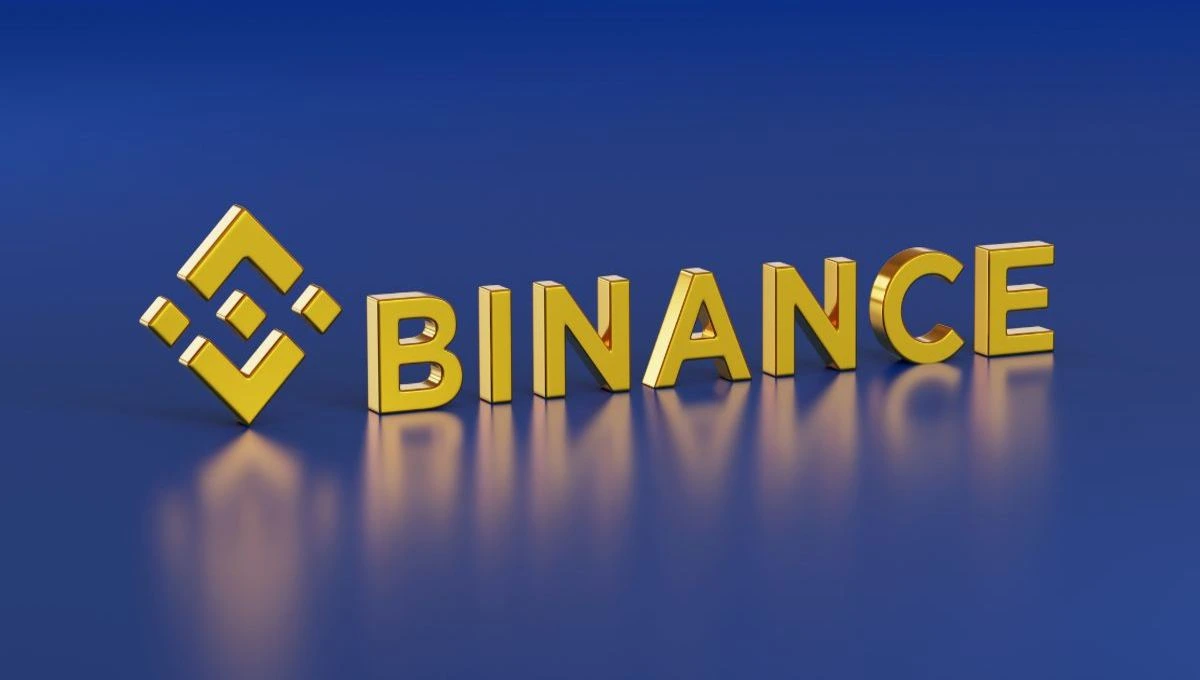
In a world of heightened regulatory scrutiny, Binance, the largest cryptocurrency exchange on the globe, is taking a beating. Its market share has been hovering near a one-year low, painting a bleak picture of the crypto giant’s current situation, based on data from research firm Kaiko.
The share of Binance’s spot trading market held steady at 56% up until June 19. This is a low not seen since August of the previous year when it fell to 53.7%. Things took a turn for the worse after the US Securities and Exchange Commission (SEC) filed a lawsuit against Binance and its founder, Changpeng Zhao, on June 5. This hit led to a daily market share dropping to an alarming 47% on April 6, following another lawsuit from the US Commodity Futures Trading Commission.
Traditional Finance Titans Enter the Fray
The pressure on crypto exchanges such as Binance is not just coming from regulatory bodies. Traditional finance behemoths like BlackRock Inc. are entering the crypto space, seeking permission to launch spot Bitcoin exchange-traded funds and attracting investors who prefer regulated institutions.
“Centralized exchanges will find themselves in a squeeze between decentralized exchanges and traditional-finance players entering the market,” warns Alex Svanevik, CEO of crypto intelligence firm Nansen.
Other Exchanges Feel the Burn
Binance isn’t alone in its struggle. US-based Coinbase, another target of the SEC, has seen its market share dip from 7.6% in January to 6.8% in June. Binance’s US entity nearly vanished from the market share leaderboard after the lawsuits from the CFTC and the SEC. The share of trading in euro pairs also took a hit.
A previously successful zero-fee promotion was halted in March, adding salt to Binance’s wounds. However, not all hope is lost as the exchange recently announced a new promotion for stablecoins, including True USD, BUSD, Tether’s USDT, and Circle’s USDC, starting June 30.
Regulatory Hurdles Prompt Exit Strategy
The continuous regulatory challenges have caused Binance to retreat from several countries. The company announced its exit from the Netherlands on June 16 after a failed registration attempt. The French authorities also probed the company after it established France as its European base. The situation got so dire that on June 23, Belgian authorities ordered Binance to cease operations there.
In Australia, Binance’s license for its derivatives business was canceled, and local banks and payment partners later severed their ties with Binance Australia. Last month, Binance announced its exit from Canada following the rollout of new crypto regulations.
Also Read – SEC’s Lawsuits Against Binance and Coinbase Intended to Foster Wall Street’s Growth, Pro-XRP Lawyer Agrees
Size Still Matters
Despite losing market share for most of 2023, Binance remains the heavyweight champion in the world of crypto exchanges. Its size gives it the advantage of offering deeper market liquidity and trading, a feature that keeps it ahead of its rivals.
Binance also holds the title of the largest holder of customer tokens with reserves of $59.2 billion, according to crypto data provider DefiLlama.
“Without other sounder alternatives available currently, investors might still see Binance as the go-to exchange for transaction purposes,” says Cici Lu, founder of blockchain adviser Venn Link Partners. She adds, “Binance’s track record of providing the highest liquidity and market depth for trading could limit the downside to their market share.”
Also Read – Binance’s Risky Move: Provoking the SEC Amid Global Legal Storms
- SEO Powered Content & PR Distribution. Get Amplified Today.
- PlatoData.Network Vertical Generative Ai. Empower Yourself. Access Here.
- PlatoAiStream. Web3 Intelligence. Knowledge Amplified. Access Here.
- PlatoESG. Automotive / EVs, Carbon, CleanTech, Energy, Environment, Solar, Waste Management. Access Here.
- BlockOffsets. Modernizing Environmental Offset Ownership. Access Here.
- Source: https://coinpedia.org/news/binances-market-share-hits-one-year-low-amid-regulatory-storm-and-traditional-finance-invasion/
- :has
- :is
- :not
- $UP
- 12
- 16
- 19
- 20
- 2023
- 23
- 30
- 7
- 8
- 9
- a
- ability
- According
- actions
- adding
- Adds
- ADvantage
- After
- against
- ahead
- alex
- All
- alone
- also
- alternatives
- Amid
- an
- and
- announced
- Another
- April
- ARE
- AS
- At
- attracting
- AUGUST
- Australia
- Authorities
- available
- Banks
- base
- based
- BE
- been
- Behemoths
- between
- Billion
- binance
- Bitcoin
- Bitcoin ETF
- BlackRock
- BlackRock Inc.
- blockchain
- bodies
- BONE
- both
- BUSD
- business
- but
- Canada
- canceled
- Casino
- caused
- ceo
- CFTC
- challenges
- champion
- Changpeng
- Changpeng Zhao
- coinbase
- Coinpedia
- coming
- commission
- commodity
- company
- continuous
- could
- countries
- crypto
- crypto data
- Crypto Exchanges
- Crypto regulations
- crypto space
- cryptocurrency
- Cryptocurrency Exchange
- Current
- Currently
- Custody
- customer
- daily
- data
- decentralized
- decentralized-exchanges
- deeper
- deliver
- depth
- Derivatives
- Dip
- dire
- downside
- Dropping
- due
- enough
- Enter
- entering
- entity
- established
- ETF
- Euro
- European
- EVER
- exchange
- exchange-traded
- Exchanges
- Exit
- Failed
- Feature
- feel
- finance
- Find
- Firm
- following
- For
- Foster
- founder
- France
- French
- from
- funds
- Futures
- Futures Trading
- getting
- gives
- Global
- globe
- Growth
- Have
- Heavyweight
- heightened
- Held
- highest
- Hit
- Hits
- holder
- holds
- hope
- However
- http
- HTTPS
- Hurdles
- i
- improved
- in
- Inc.
- Including
- institutions
- Intelligence
- intended
- invasion
- Investors
- IT
- ITS
- January
- june
- just
- Kaiko
- large
- largest
- Last
- later
- launch
- lawsuit
- Lawsuits
- lawyer
- Led
- Legal
- License
- like
- likely
- LIMIT
- LINK
- Liquidity
- local
- LOCAL BANKS
- LOOKS
- losing
- lost
- Low
- Manipulation
- March
- Market
- Meet
- might
- mitigation
- Month
- most
- move
- Nansen
- Near
- nearly
- Netherlands
- New
- new crypto
- of
- offering
- on
- Operations
- Other
- painting
- pairs
- partners
- payment
- perhaps
- permission
- picture
- plato
- Plato Data Intelligence
- PlatoData
- players
- prefer
- pressure
- pretty
- previous
- previously
- promotion
- provider
- providing
- purposes
- Read
- real
- recently
- record
- Registration
- regulated
- regulations
- regulatory
- remains
- research
- reserves
- Retreat
- revenue
- Risky
- rivals
- rollout
- s
- salt
- says
- SEC
- Securities
- Securities and Exchange Commission
- see
- seeking
- seem
- seen
- several
- Share
- she
- since
- situation
- Size
- So
- solution
- Space
- Spot
- Spot Trading
- Squeeze
- Stablecoins
- Starting
- steady
- Still
- Storm
- stronger
- Struggle
- succeed
- successful
- such
- surveillance
- takes
- taking
- Target
- than
- that
- The
- the Netherlands
- The US Securities and Exchange Commission
- the world
- their
- themselves
- There.
- they
- things
- this
- threshold
- Ties
- Title
- to
- Tokens
- took
- track
- Trading
- Trading Market
- traditional
- traditional finance
- transaction
- true
- TURN
- until
- us
- USD
- USDC
- USDT
- Wall
- Warns
- was
- webp
- when
- while
- WHO
- will
- with
- world
- worse
- wounds
- year
- zephyrnet
- zero-fee
- Zhao











